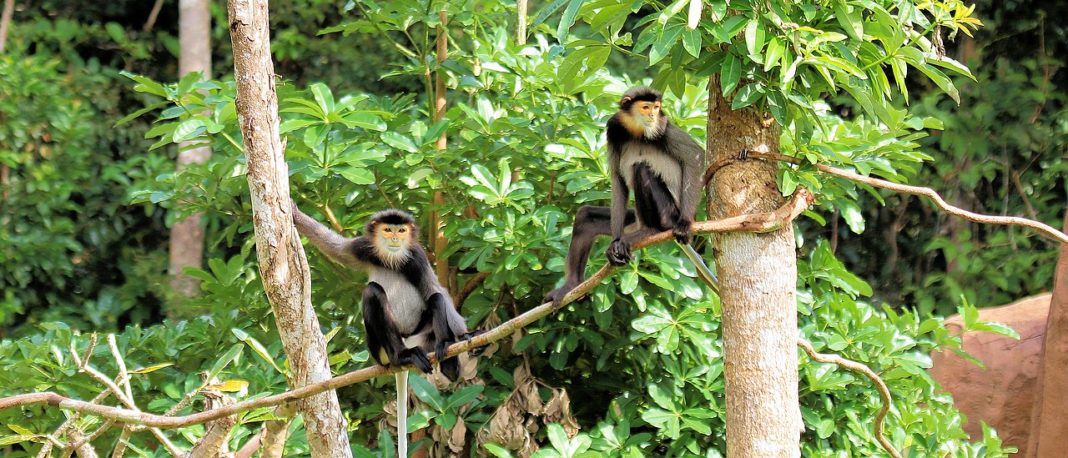This is the only douc species with gray-blue facial hair. They have gray body hair with a white streak on the rump. The fur on the upper part of the back and on the arms is gray. The hair on the head is gray but has a black rim above the forehead and a white beard. The black-shanked douc is different from the other two species in that its legs and arms are black.
Black-shanked doucs live in the Southern Annamite Range of Vietnam (Lam Vien Plateau) and the neighboring mountains of Cambodia.
 Although there is no specific population estimate, the Wildlife Conservation Association in 2020-2021 reported nearly 25,000 individuals currently living in Cambodia’s Keo Seima Wildlife Sanctuary and obtained stability over the past decade. Before this population was discovered, the largest populations were believed to be in adjacent Vietnam, where the largest known population is around 500-600 individuals
Although there is no specific population estimate, the Wildlife Conservation Association in 2020-2021 reported nearly 25,000 individuals currently living in Cambodia’s Keo Seima Wildlife Sanctuary and obtained stability over the past decade. Before this population was discovered, the largest populations were believed to be in adjacent Vietnam, where the largest known population is around 500-600 individuals
Black-shanked doucs preferentially utilise evergreen forest, where they maintain the largest group sizes and highest relative densities compared to those in other habitat types. They are also commonly found in semi-evergreen and mixed deciduous forest, although occurrence in this latter type may be sub-optimal due to limited food resources, and can be found in dry deciduous dipterocarp forest but likely only where there are patches of the preferred forest types.
Their food is mainly young leaves, their main source of water absorption, seeds, fruits and berries.
Accroding to Wikipedia.












